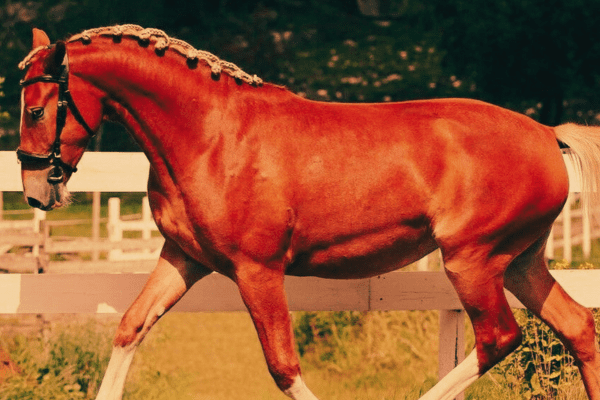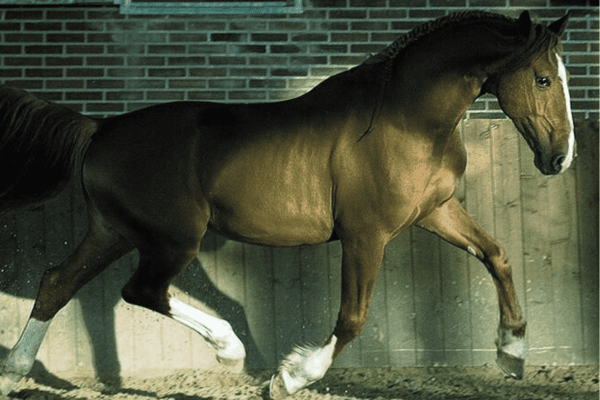The Frederiksborger, heralding from Denmark, stands as the nation’s most ancient horse breed. Once a symbol of opulence and high status during the Renaissance and Baroque eras, these horses were highly sought after as emblematic luxuries.
In the present day, while their numbers may be limited, the Frederiksborger has cultivated a devoted admirer base, testament to its enduring appeal and distinguished heritage.
History:
The Frederiksborger Horse boasts an extraordinary heritage dating back to 16th-century Denmark under royal protection. Over its long journey marked by royal favor, global influence and remarkable evolution is boasts an enthralling tapestry of equine heritage.
Founding of the Royal Frederiksborg Stud
Year: 1562
Patron: King Frederik II
Initial Breeds: Neapolitan horse and the Iberian precursors of the Andalusian horse
This stud, founded as a royal project, was intended to produce horses that embodied both beauty and utility.
To this end, its initial stock was carefully chosen from among those possessing some of the best characteristics at that time.
Development and Influence
Addition of New Breeds: Over time, the Frederiksborger Stud welcomed new breeds such as Norfolk Roadster and Arab-bred horses into its bloodline, expanding and diversifying it.
Equestrian Roles: This breed excelled at haute ecole (classical dressage) and warfare due to their agility and trainability, as well as court parades and ceremonies where they represented elegance as well as strength.
By the 18th century, Frederiksborger horses had achieved such widespread popularity that they became one of Denmark’s primary exports, spreading across Europe while contributing to other breeds’ development such as heavy warmbloods and Lipizzaners – and many notable individuals including Pluto (born 1765) became foundational sires of Lipizzaner breeding programs.
Decline and Preservation Strategies:
Closure of Royal Stud: 1839 marked the end of the royal stud, although its closure didn’t signal an end for breed. Instead, it merely changed its path and trajectory.
Continuation by Private Breeders: Following the closure of the royal stud, private breeders took over, adapting Frederiksborgers to fulfill new roles within society – once an emblem of luxury, now seen more commonly used for practical tasks like stagecoach driving and agricultural tasks.
Revivalism efforts undertaken in 1939 led to the addition of East Friesian, Oldenburg Thoroughbred, and Arabian bloodlines; this revitalization helped the breed adapt while still maintaining its distinct features.
Legacy and Modern Influences
Influence of Frederiksborgers on Danish Warmbloods: Modern Danish Warmbloods can often trace their lineage back to Frederiksborgers through female lines.
Contribution to Other Breeds: The Swedish Sprott has had an effectful influence on several European equine breeds, such as Holsteiners, Swedes and Hanoverians, among many others.
Even in spite of these influences and changes, the Frederiksborger has remained purebred over the course of one hundred years, guaranteeing its consistent type and preserving its unique traits. Thanks to this dedication to purity, Frederiksborgers remain an integral and treasured part of equestrian history.
Characteristics:
Although numbers of Frederiksborger Horses have been decreasing over time, their appearance remains an impressive blend of aesthetic beauty and functional utility.
Renowned for their striking coat colors and patterns – the most prevalent color being vibrant flaxen chestnut; other colors found include bayskins buckskins palominos grays featuring stunning rabicano roaning or mesmerizing sabino markings for added style.
Elegant Conformation
Head: A Frederiksborger head can be identified by its wide muzzle and profile which subtly curves to become convex.
Neck: An emblem of strength, the neck is typically muscular and often features an impressive crest set atop well-developed shoulders.
Body Structure: This breed exhibits an elegant and level back with a sturdy loin, as well as moderately elevated withers and expansive and muscular hindquarters that reach to form an even croup.
Topline and Tail: The Frederiksborger has an attractive level topline that pairs perfectly with its high-set neck and elegantly carried tail to create an imposing presence.
Gaits: An Orchestra of Movement
Frederiksborgers are widely revered for their dynamic and expressive gaits, particularly their trot characterized by its flamboyance and extended stride; walk purposeful yet unhindered; canter sufficiently powerful; in the jumping arena they exhibit willing natures with calm dispositions that tend to remain less perturbed by minor mishaps such as knocked rails.
Breed Hallmarks
The Frederiksborger was considered ahead of its time when it comes to conformation and type, exuding an air of quality and consistency. With solid legs that provide a firm foundation, complementing an overall sturdy build.
Frederiksborger Horses are living images of history and beauty, bridging their storied past with distinct physical characteristics that set it apart.
With its distinct coloring, powerful build and graceful movements, they continue to win hearts of equestrian enthusiasts around the globe and serve as symbols of both past glory and present grace in equine circles.


Temperament:
Frederiksborgers are beloved horses known for their gentle disposition and intelligence, eagerness to learn, and work ethic; making them ideal candidates for various equestrian disciplines including carriage driving and cavalry work as well as dressage, show jumping and even therapeutic riding programs.
Today Status:
The modern Frederiksborger Horse continues to exude much of its historic charm and utility, even without royal breeding stables breeding them anymore. While dedicated breeders across Denmark strive to preserve this breed’s heritage and characteristics – keeping the Frederiksborger alive as an emblematic link between Denmark’s royal past and present while delighting horse enthusiasts with its beauty, versatility, and gentle temperament.

